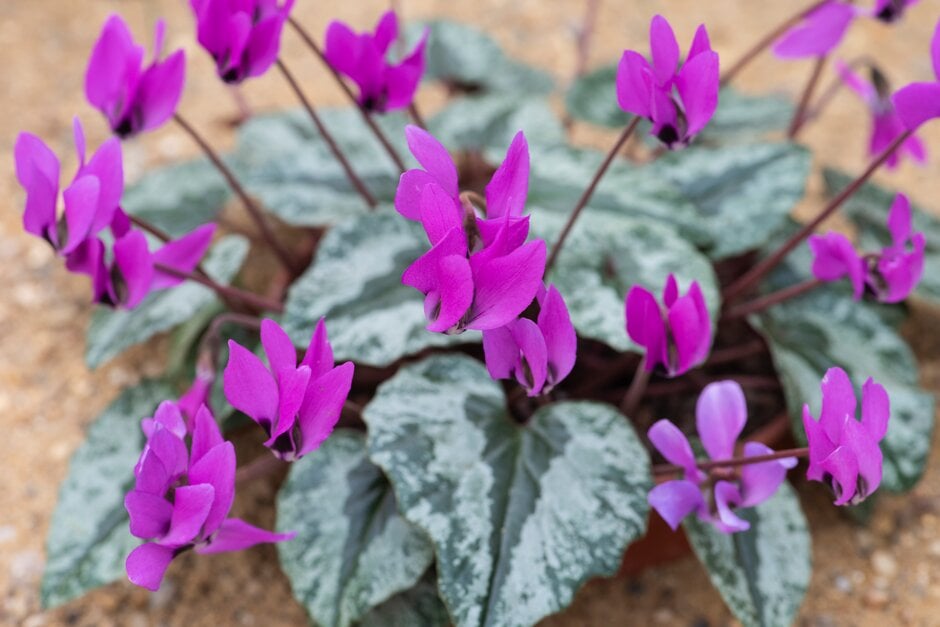Size
Ultimate height
Up to 10cmTime to ultimate height
2–5 yearsUltimate spread
0–0.1 metreGrowing conditions
Moisture
Well–drainedpH
Acid, Alkaline, NeutralColour & scent
| Stem | Flower | Foliage | Fruit | |
| Spring | ||||
|---|---|---|---|---|
| Summer | ||||
| Autumn | ||||
| Winter | Pink |
Position
- Partial shade
Aspect
South–facing or East–facing or West–facing
Exposure
Sheltered Hardiness
H4Botanical details
- Family
- Primulaceae
- Native to GB / Ireland
- No
- Foliage
- Deciduous
- Habit
- Tufted
- Potentially harmful
- Ornamental bulbs, not to be eaten. Wear gloves and other protective equipment when handling Pets: Ornamental bulbs, not to be eaten - see the HTA guide to potentially harmful plants for further information and useful contact numbers
- Genus
Cyclamen are tuberous perennials with rounded, sometimes angular, leaves which are often attractively mottled. The nodding, characteristically shaped flowers have 5 reflexed and twisted petals, often with dark markings at the base
- Name status
Correct
- Plant range
- S Asia Minor
How to grow
Cultivation
Plant 2cm deep or with the tops of the tubers just at the soil surface. Can be grown indoors in containers of an equal mix of loam, leaf mould, peat and sharp sand. Keep completely dry in dormancy. See hardy cyclamen cultivation for further advice
Propagation
Propagate by seed, in darkness as soon as ripe at 6 to 12°C. Can be beneficial to soak seed for 10 hours prior to sowing
Suggested planting locations and garden types
- City and courtyard gardens
- Rock garden
- Cottage and informal garden
- Patio and container plants
- Banks and slopes
- Flower borders and beds
- Underplanting of roses and shrubs
Pruning
No pruning required
Pests
May be susceptible to mice and squirrels
Diseases
May be susceptible to cyclamen grey mould, particularly when grown under glass
Love gardening
Sign up to receive regular gardening tips, inspiration, offers and more
View our Privacy Policy
Get involved
The Royal Horticultural Society is the UK’s leading gardening charity. We aim to enrich everyone’s life through plants, and make the UK a greener and more beautiful place.
